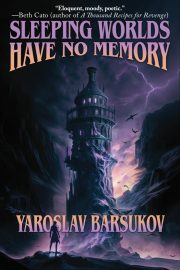THE INDIE FILES: How to Pitch Your Book to Libraries So They See You as an Easy Win to Please Their Patrons
by Kelly McClymer
Most writers grew up reading books checked out from the library. There is a special place in our hearts for those library shelves full of books, so naturally, we want our books to be there.
For indie authors, there are three hurdles to getting those books into libraries:
- making your book easy for a library to acquire
- getting the attention of an acquisition librarian
- making your book very attractive once it has reached the attention of said librarian
The good news is that these hurdles can be jumped over with specific actions:
- make your books available to be acquired by a library system
- let your readers know how they can request your books at their local library
- reach out to libraries with an irresistible pitch to let them know why they may want to acquire your books
These are three simple actions, but they each have a few hurdles of their own.
Make Your Book Easy to Acquire
Indie authors can easily make their books available to the major library distributors. Make sure your paperback/hardback is available for distribution by Ingram for physical editions through IngramSpark. Bonus points if you create a library-grade durable volume (stitched binding rather than glue, hardback rather than paperback). Also, make sure you use the right MARC metadata so the library can manage the borrows. You can increase the price of this library edition to cover the expense.
Ebooks and audiobooks have a smaller acquisition hurdle because they do not require physical space. However, several library distributors serve different libraries. For example, my library, Bangor Public Library, uses the CloudLibrary app, which is serviced by Biblioteca.
For fiction, focusing on OverDrive, Baker & Taylor, Biblioteca, and Hoopla is enough to make you available to the libraries your readers use. While you can submit your books to OverDrive directly, an easier path to reaching all the libraries is to use Draft2Digital or PublishDrive, which provide physical and digital books to the library distribution channels mentioned above, plus BorrowBox and Odilo. You may opt-in to library channels only if you prefer to distribute your books to non-library retailers directly with Amazon, Barnes & Noble, etc. Draft2Digital takes a percentage (10 percent currently) of each sale you make, while PublishDrive charges a monthly fee depending upon which level of service you choose.
Authors who distribute directly from Kobo Writing Life can opt-in to OverDrive digital distribution there (including special library pricing).
Create a Library Specific Pitch
Once you have your books available to all the major library distributors, you must make them attractive to the acquisition editor. Think about all the book catalogs they get from publishers. They are looking for books that stand out and that their patrons will love.
Create your library pitch based on why your book would appeal to a patron. Do you feature a character with an underrepresented disability? Are you a local author? Your angle can be anything specific and interesting, or unusual. As some patrons ask for large print, consider providing that format.
Design your pitch handout (it could be a PDF or a webpage you can email to librarians, share on social media, or tell your readers about, and/or a physical bookmark or postcard). The webpage or handout should include everything that makes the book easy to order and attractive for the library to acquire. Title, cover, price, description, tagline, library-tailored hook, what formats are offered (print, digital, audio, large print, etc.). Anything about you that may be of interest to the library (your hometown, college town, relevant skills, etc.). Having a Library of Congress control number could also help.
Test Drive Your Library Pitch
Try to test out your library pitch with a local librarian. Fine-tune it, then reach out more widely with an email press release with the details of your book, as well as a compelling reason the library may want to acquire it. If you have not made your book available to libraries before, you could simply send your press release with the headline “New Library Edition Available.”
One overlooked way to get your book acquired by a library is to ask your readers to request the book in person or online. Not all reading apps support this function, but the main library website usually allows readers to request a book. For example, Bangor Public Library has a frequent question sidebar on the main page. One is “How Do I Suggest an Item to Be Purchased?” Patrons may need to enter their library ID number, so let them know.
Fine Print on Library Sales
Many indie authors prefer to sell books directly to their readers rather than pursue library sales because a library book may be read by many potential buyers. When pricing a digital library edition, experts suggest going higher: $25-$75. However, if your book doesn’t have much of an acquisition hook, you could initially set a budget-friendly price.
There are two payment models: OCOU (one copy, one user) or CPC (cost per checkout). With CPC, many patrons can check out your book at the same time, and you are paid a small percentage per checkout. Some library distributors (such as Hoopla) allow you to choose between the two methods.
Be aware of the terms for each distributor: one-time sales (the library purchases your book for a lifetime) or checkout limit sales (the library purchases your book for a set number of checkouts and then must re-purchase to continue to offer to patrons). You may need to periodically check that your ebook is still available. You can do this at WorldCat.org.
Library sales are about two things: discoverability and making your book available to those with a limited book budget. Every indie author needs to decide how library sales fit into their business model. Once you’ve made your book easy for a library to acquire and created an irresistible library pitch, sending a press release to librarians you meet or libraries you visit makes you stand out as an author who understands books, book marketing, and data-loving librarians.
 Kelly McClymer writes fairytale fantasy, cozy mystery, and anything else that takes her fancy. She believes indie authors can do anything, armed with the right data and a boundless imagination.
Kelly McClymer writes fairytale fantasy, cozy mystery, and anything else that takes her fancy. She believes indie authors can do anything, armed with the right data and a boundless imagination.



